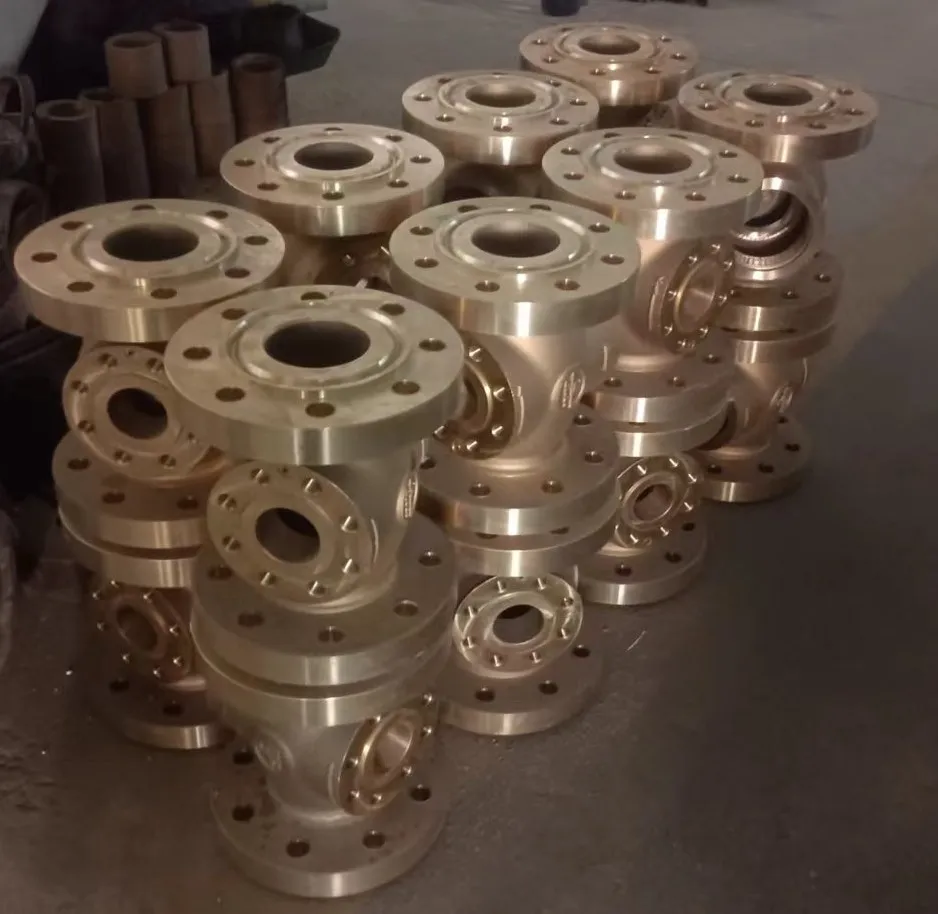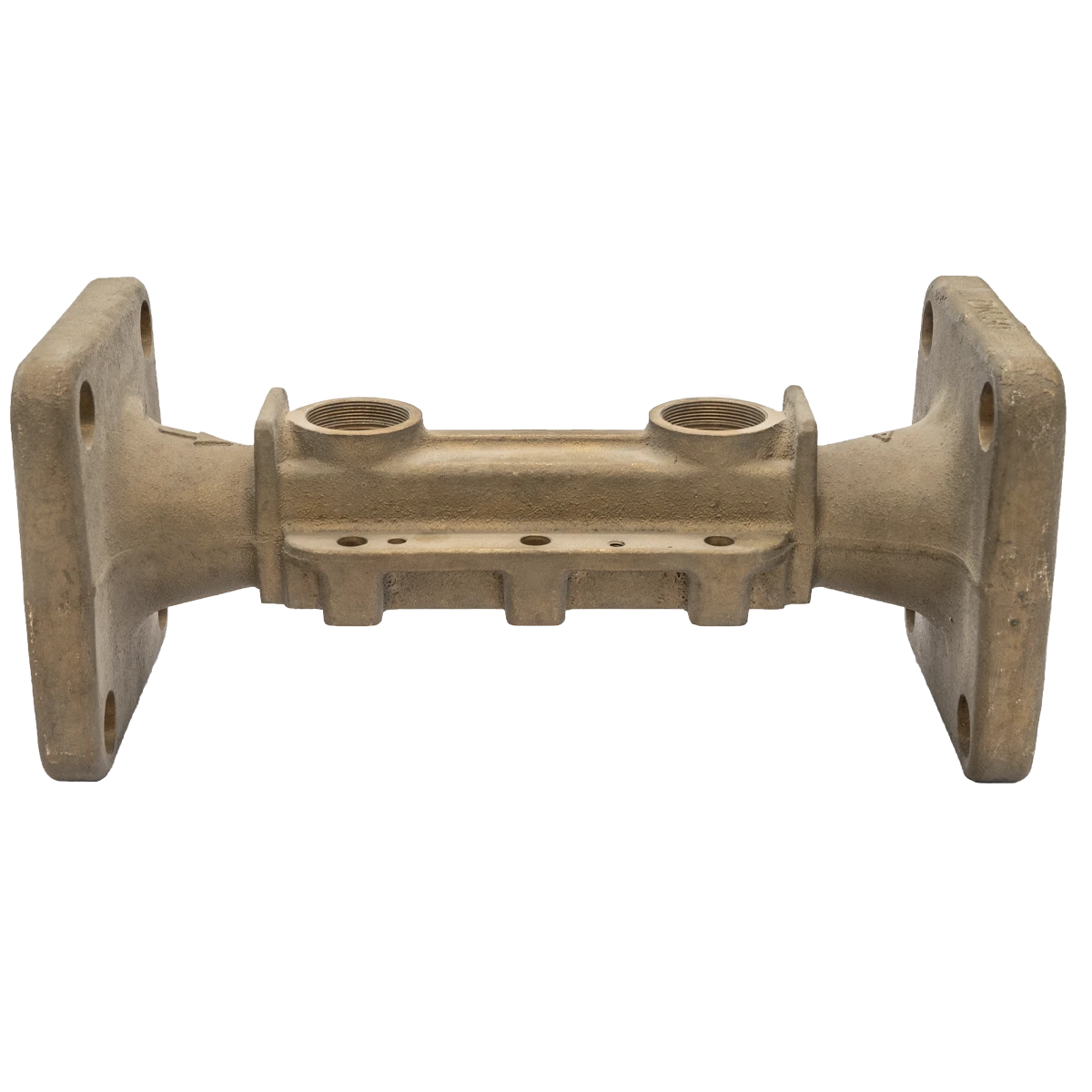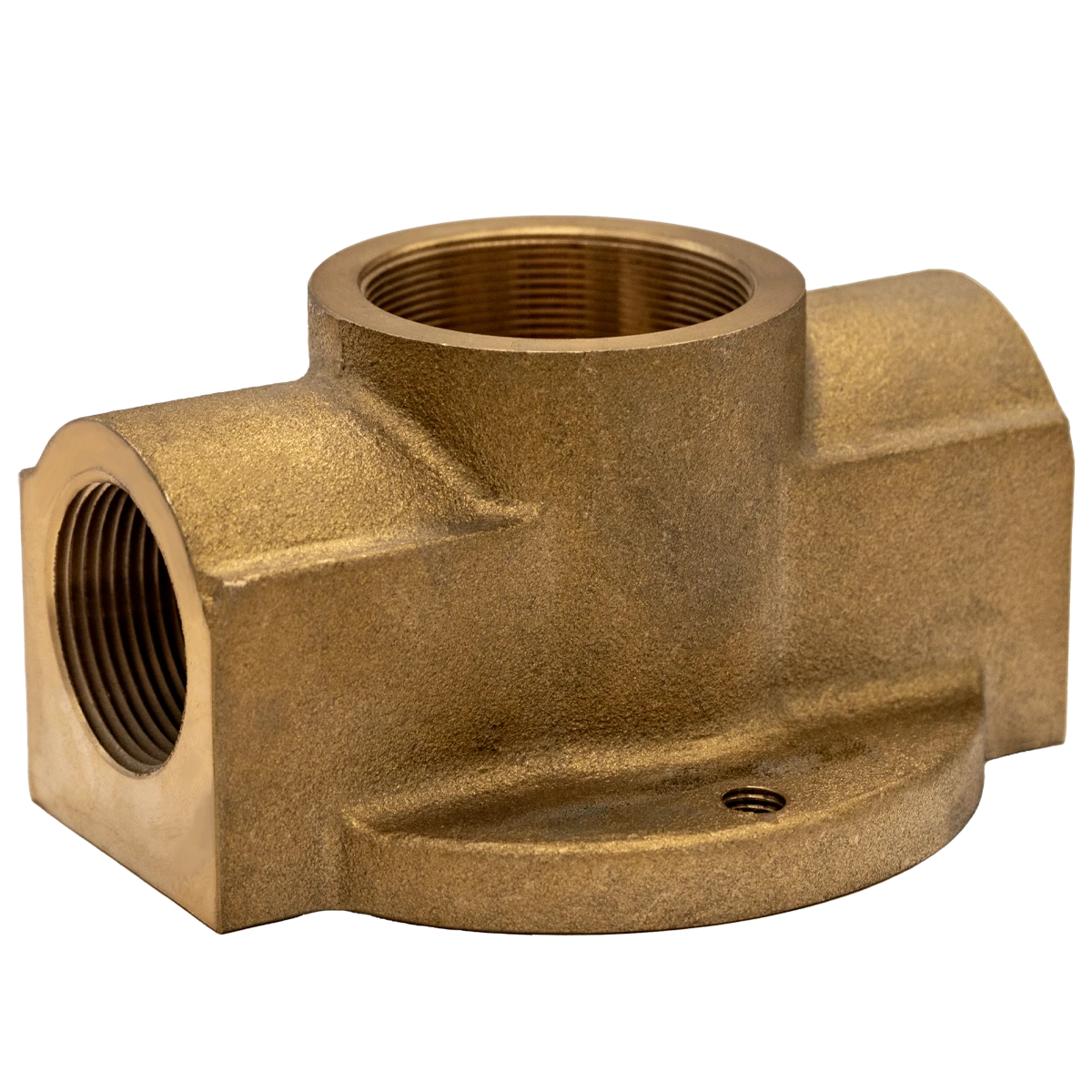Mobile:+86-311-808-126-83
Email:info@ydcastings.com
Copper casting material introduction and production of technical requirements
- Introduction of copper casting material
Copper castings are metal parts made of copper as the main component through the casting process. As an important non-ferrous metal, copper has excellent electrical conductivity, thermal conductivity, corrosion resistance and processability, so it is widely used in the industrial field. Copper castings are made of a wide variety of materials, commonly including pure copper, brass, bronze and so on.
Pure copper: pure copper castings are mainly composed of copper elements, with high electrical and thermal conductivity, suitable for electrical, electronic and other fields.
Brass: brass is an alloy of copper made from copper as the main component, adding appropriate amount of zinc and other alloying elements. Brass castings have good processing performance and corrosion resistance, widely used in construction, machinery, ships and other industries.
Bronze: Bronze is an alloy of copper formed by taking copper as the base and adding tin, aluminum, silicon, lead and other elements. Bronze castings have high strength, hardness and wear resistance, suitable for the manufacture of high load, high wear parts.

Second, the technical requirements for the production of bronze castings
Copper castings in the production process, in order to ensure product quality and performance, need to follow a series of technical requirements:
Selection of raw materials: selection of high-quality, high purity copper as raw materials to ensure that the casting performance is stable and reliable. At the same time, according to the casting environment and requirements, select the appropriate alloying elements and add the proportion.
Mold design and production: According to the design drawings and technical requirements of the castings, precisely design and produce the casting mold. The mold should have high precision and strength to ensure the shape and dimensional accuracy of the castings.
Melting and pouring: Strictly control the melting temperature and time to ensure that the copper liquid composition is uniform and free of impurities. In the pouring process, the speed and temperature should be controlled to avoid defects such as porosity and slag entrapment.
Cooling and demolding: Reasonably control the cooling speed and demolding time to prevent the castings from deformation, cracks and other defects. After demolding, make a preliminary inspection of the castings to ensure that there are no obvious defects.
Subsequent treatment: carry out necessary grinding, polishing, cutting and other treatments on the castings to eliminate surface defects and improve the aesthetics. Some castings also need to be heat-treated to improve their mechanical properties and corrosion resistance.
Quality inspection: Strict quality inspection of castings, including dimensional accuracy, surface quality, chemical composition, mechanical properties and other aspects of the test. Ensure that the castings meet the design requirements and relevant standards.
In summary, copper castings are made of a wide variety of materials, each with its own characteristics and application areas. In the production process, a series of technical requirements need to be followed to ensure the quality and performance of the castings. By continuously optimizing the production process and technology, the performance and service life of copper castings can be improved to meet the needs of various industries.
-
Materials Used in Manufacturing Cap End Pipe FittingsNewsNov.24,2025
-
Material Properties of CF8M CastingNewsNov.24,2025
-
How to Inspect Pump Cap Ends for DamageNewsNov.21,2025
-
Backward Curved Impeller – Efficient Airflow Solutions for Industry | YD CastingsNewsNov.21,2025
-
Automobile Water Pump - Efficient, Quiet, Durable & ElectricNewsNov.21,2025
-
Impeller for Pumps – High-Efficiency, Durable, OEM-ReadyNewsNov.21,2025











